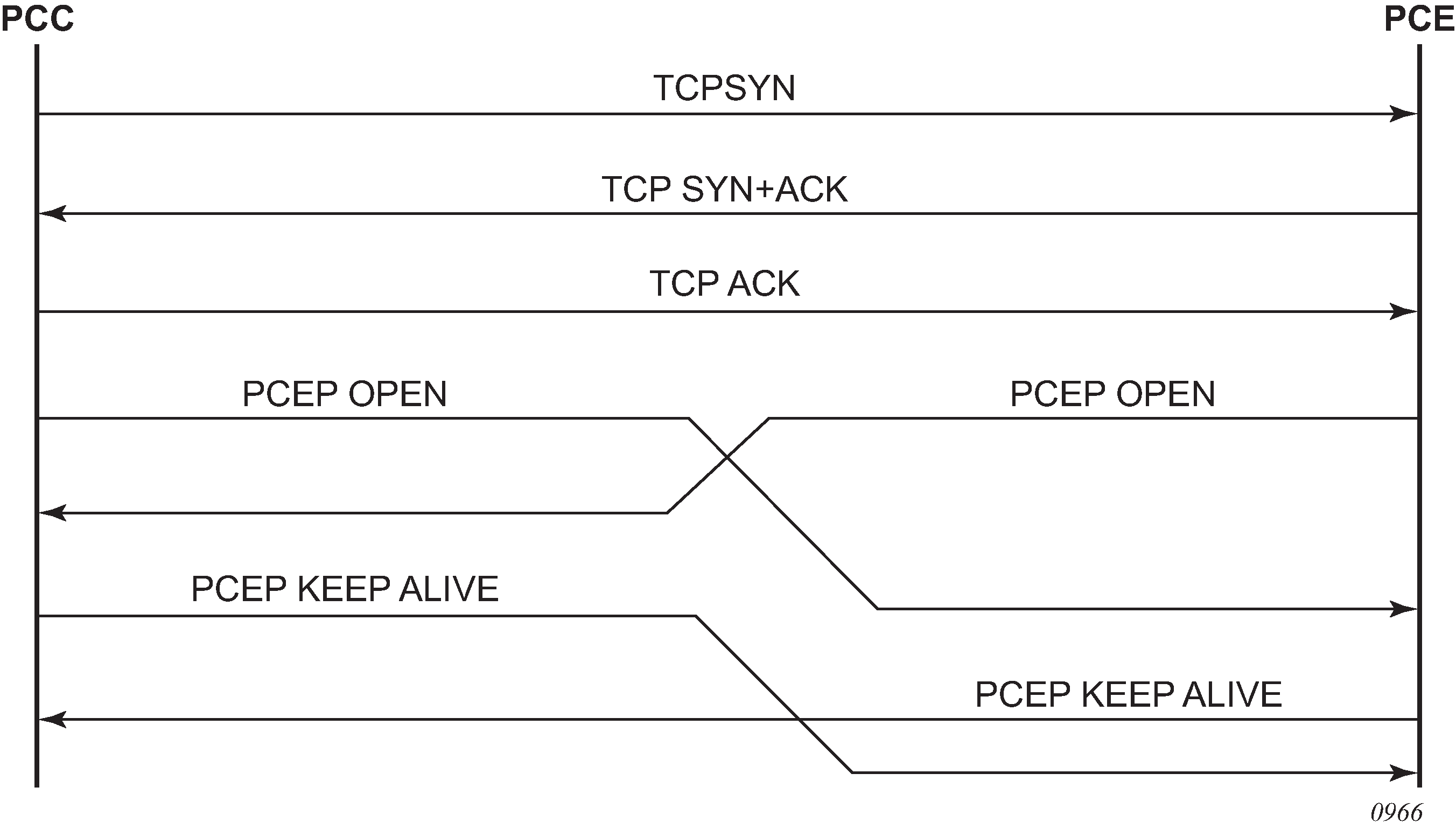The PCEP protocol operates over TCP using destination TCP port 4189. The PCC always initiates the connection. Once the user configures the PCEP local address and the peer address on the PCC, the PCC initiates a TCP connection to the PCE. Once a connection is established, the PCC and PCE exchange OPEN messages, which initializes the PCEP session and exchanges the session parameters to be negotiated.
The PCC always checks first if the remote PCE address is reachable out-of-band via the management port. If not, it will try to reach the remote PCE address in-band. When the session comes up out-of-band, the management IP address is always used; the local address configured by the user is ignored and is only used for an in-band session.
A keep-alive mechanism is used as an acknowledgment of the acceptance of the session within the negotiated parameters. It is also used as a maintenance function to detect whether or not the PCEP peer is still alive.
The negotiated parameters include the Keepalive timer and the DeadTimer, and one or more PCEP capabilities such as support of Stateful PCE and the SR-TE LSP Path type.
The PCEP session initialization steps are illustrated in Figure 1.

If the session to the PCE times out, the router acting as a PCC keeps the last successfully-programmed path provided by the PCE until the session to the PCE is re-established. Any subsequent change to the state of an LSP is synchronized at the time the session is re-established.
When a PCEP session to a peer times out or closes, the rate at which the PCEP speaker attempts the establishment of the session is subject to an exponential back-off mechanism.